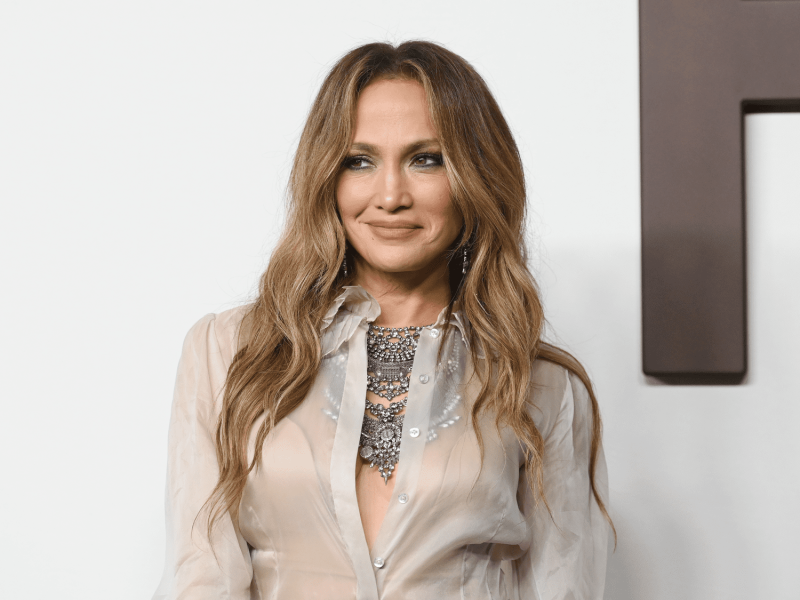Contents
Perhaps you’re someone who saves money by only getting a haircut twice per year—and going with the most simple style when you do (*slowly raises hand*). Or, maybe you went rogue with your stylist and ended up with a totally new, bold look that you’re unsure how to maintain for the long haul. Whatever your situation, you’re probably wondering, "How often should I get a haircut?"
We chatted with celebrity hairstylists to create a comprehensive guide to getting a chop, whether you want to stay long, go short, or fall somewhere in between.
Meet the expert
- Rogerio Calavante is a celebrity hairstylist and the owner of The Second Floor Salon in New York City. Sabrina Porsche is a Los Angeles-based celebrity hairstylist. Raven Hurtado is a celebrity hairstylist at Maxine Salon in Chicago.
But first, some general rules of thumb. The factors that influence how frequently you should get your hair cut include your hair’s unique growth rate, texture, amount of damage, and the style you have—or want. “When your ends start to feel dry or frizzy, you notice a lack of volume, your hairstyle isn’t holding up, or your hair overall feels dull, it’s time for a trim,” celebrity stylist Raven Hurtado tells InStyle. But, of course, there’s room for flexibility. “A good general rule of thumb is three to four months for women,” explains fellow pro Calavante. “For men with short hair, a haircut every month is recommended. Men with longer haircuts can go about 1.5 months between cuts.”
Ahead, we’ve divided up the pros’ advice based on hair type and length so you can find exactly what you’re looking for.
When to Get Your Hair Cut
Short Hair
If your hair is above shoulder length, your hair pretty much automatically warrants more frequent cuts. These lengths and styles tend to lose shape more quickly. “It’s a fact that the shorter you go, the sooner you'll need to visit your stylist unless you want to grow it out,” says Calavante. Bobs need a trimming every six to eight weeks, he says, to maintain their shape. “A pixie cut does require more salon visits to maintain the length and choppy layers,” adds Hurtado, who recommends trims every four to six week. If you decide to grow out a short cut like a pixie, getting monthly touch-ups at the salon will prevent any awkward phases and ensure you feel confident at every stage. For a blunt cut style, Calavante recommends a retouch at least every three months to maintain that sharp line.

Medium Length Hair
Medium-length cuts generally fall around shoulder length and a few inches below and are a nice middle-of-the-road length for easy maintenance. Two popular medium-length styles are the lob and wolf cut. “The wolf cut consists of many layers for movement and volume and gives an edgy vibe,” says Hurtado. “This cut looks great air-dried for low maintenance because of the short layers that’ll give it a natural shape and movement.” Calavante says that medium-length styles “can be trimmed every four months because below the shoulder, you don’t need to worry about the ends flipping out.” Of course, if you want your hair to stay within a certain length range or you have damage, you might opt to see your stylist sooner.
Long Hair
If you have long hair, you can typically go a while before heading to the salon. “Long haircuts can require less maintenance,” says Hurtado. “For long hair with layers and long curtain bangs, you can go up to three months in between haircuts.” Calavante stretches that even more, noting that styles with or without layers can go up to five months between trims, “but need regular at-home maintenance to prevent split ends.” If you’re noticing more damage and it seems like your hair has stopped growing altogether, that’s a sign to make an appointment.

Curly and Textured Hair
Curly and coily hair tends to grow slower than straight or wavy strands, so there’s no need to rush to your stylist. “Super curly or textured hair can wait longer between haircuts due to shrinkage, which makes it take longer for growth to show,” says Calavante. However, curly girls are prone to damage, so inspect your hair for split ends, fairy knots, and breakage six to eight weeks after your cut to see if it’s time to go back.
Fine and Damaged Hair
If you have fragile or damaged strands, you’ll likely notice a dull, limp appearance, visible split ends, or lots of breakage, which leads to frizz. Hurtado recommends a trim every eight weeks for anyone who regularly uses heat to style their hair or has finer hair that’s more prone to damage. “Split ends especially can be detrimental to hair growth, so removing those is the biggest reason for a trim,” says celebrity stylist Sabrina Porsche. Once you get your damage under control, finding nourishing, protecting products is key to prolonging the life of your haircut.
Men’s Haircuts
For the guys, you’ll need a standing salon appointment every four to six weeks at least, according to our stylists—and that’s regardless of your style. “Men’s haircuts depend on preference and lifestyle,” says Hurtado. “Classic hairstyles like the pompadour, which are versatile enough to work with casual style or a formal look, usually require a trim every 1.5 months.” The wolf cut is pretty gender-neutral, too, and requires a bit less upkeep, similar to the mullet, which is still trending. “Styles like these above can go about two months between trims but may require more frequent neck trims, as it tends to turn into a little tail in the back,” says Calavante. A classy crew cut, fade, or a simple buzz cut, on the other hand, requires monthly upkeep.
How to Maintain a Haircut
“First of all, get a good haircut!” says Calavante. And he’s right—the best haircuts can go longer without starting to look off-balance or misshapen. “I have clients who go six months without needing a haircut because their hair grows beautifully, and they don't see the need to come back sooner,” he says. Calavante also warns against at-home trims. (Yep, even if your situationship breaks it off and you impulsively want to change your image.) “It's common for women to attempt trimming bangs or cutting a single strand that bothers them, which—and I hate to say it—often ends in disaster, and then they need a professional fix,” he says.
You also want to ensure your shower is loaded with hair-care products that suit your style. “To maintain a haircut at home, use a shampoo and conditioner that is meant for your hair type and texture,” says Hurtado. “For instance, if your hair is dry, use a moisturizing shampoo and conditioner to hydrate the hair, or if your hair feels dull and limp, use shampoo and conditioner that adds body and bounce.”

Be sure to prevent damage, especially if you and your styling tools are BFFs. “Before using heat, apply a heat protectant spray or serum to protect your hair from heat damage,” says Hurtado. “Also, look for hot tools that minimize damage.” (Hi, Dyson!) And, on that note, if you want a more complicated cut, learn some basic styling to show it off. “You can curl or blow out your hair to show off any layers, use rollers for volume, and apply volumizing or texturizing products,” says Hurtado. If you’re getting a new style, don’t hesitate to ask your stylist about their styling recommendations. They might even give you a quick tutorial or product recommendations.
Of course, since we know that healthy hair starts from the root, maintaining a great cut means taking care of your scalp. “Making sure your scalp is clean and healthy is also another way to establish growth through the entire process, which might require a visit to a dermatologist for any concerns,” says Porsche.
Caring for your hair and keeping a great stylist on lock are two key factors to creating and maintaining the cut of your dreams.
